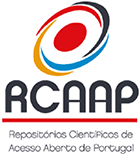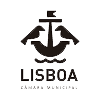The silver assayer craft in Lisbon (1690-1834)
DOI:
https://doi.org/10.48751/CAM-2017-7201Keywords:
Silversmiths, Silver, Lisbon, Silver marks, Assay officeAbstract
From the rigor and complexity of the silversmith’s work, translated into the rules in the Regimento dos ourivezes da prata of 1572, an important precept was defined in relation to the requirement for the quality and artistic guarantee of the silver objects – the marking of the silver works – by asserting the city hallmarks. Although a century earlier, in 1460, an provision had established that the silversmiths of Lisbon mark their objects with the city’s hallmark, the law was not always enforced. It was only in 1688 that a consultation of the Senate of the Lisbon City Council determined the necessity of a regiment for the position of assay office in the city, which, after a concordant royal resolution, would be decreed in July 1689.
In this document there is an alteration of the old custom which gave the judges of the corporation the duty to mark the pieces presented to them by the silversmiths. From now on, this position was of municipal appointment. The importance of the role of the assay office as the guarantor of the legality of the silver used by the silversmiths became essential throughout the whole XVIII century and the following, as he was responsable for the examination of the silver objects produced.
Downloads
Downloads
Published
How to Cite
Issue
Section
License
Copyright (c) 2017 Rita Carlos

This work is licensed under a Creative Commons Attribution-NonCommercial 4.0 International License.
The authors retain copyright and grant the journal the right of first publication, with the work simultaneously licensed under the Creative Commons Attribution License CC BY-NC 4.0 which allows sharing and adapting the text as long as its authorship is correctly attribbuted with recognition of the initial publication in this journal.








